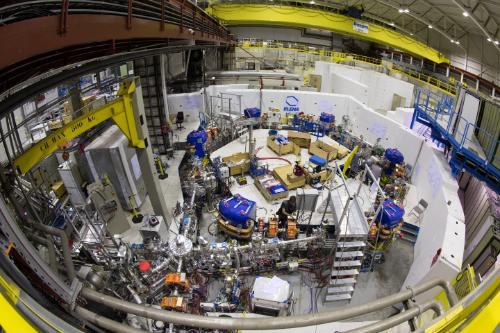ELENA in Wonderland
At the start of Lewis Carroll’s Through the Looking-Glass, young Alice wonders what life would be like in the house at the other side of the mirror, before being magically transported into it.
Almost a century and a half after the publication of the celebrated tale, physicists at CERN have made this crossing through the looking-glass a reality. As a token of the inverted world to be found there, the particle accelerator scientists had to build an antiparticle decelerator.
The so-called Antiproton Decelerator (AD), slows down antiprotons to an energy of 5.3 MeV. In service since 2000, the AD has been helping scientists address fundamental questions like the effect of gravity on antimatter or the imbalance between matter and antimatter in the Universe.
The lowest the energy of the antiprotons the easier it is for the experimenters to manipulate and study them. A new machine called ELENA (Extra Low ENergy Antiproton deceleration ring) has been built to slow the antiprotons down even further, to just 0.1 MeV. In addition, the density of the beams will be improved, increasing the amount of data available for experiments.

ELENA - Image CERN/Maximilien Brice
ELENA measures 30 metres in circumference and has just begun its first tests with beam. After the tests have been finalised, the antiprotons will be sent to experiments were they will be used to produce atoms of antimatter and study its properties.
The AVA project will help to further exploit this new facility by training its fellows in the optimization of low-energy storage rings, and the development of diagnostic devices especially designed for experiments in ELENA.
Further information:
CERN Courier, “CERN soups up its antiproton source” Nov 11, 2016
http://cerncourier.com/cws/article/cern/66893